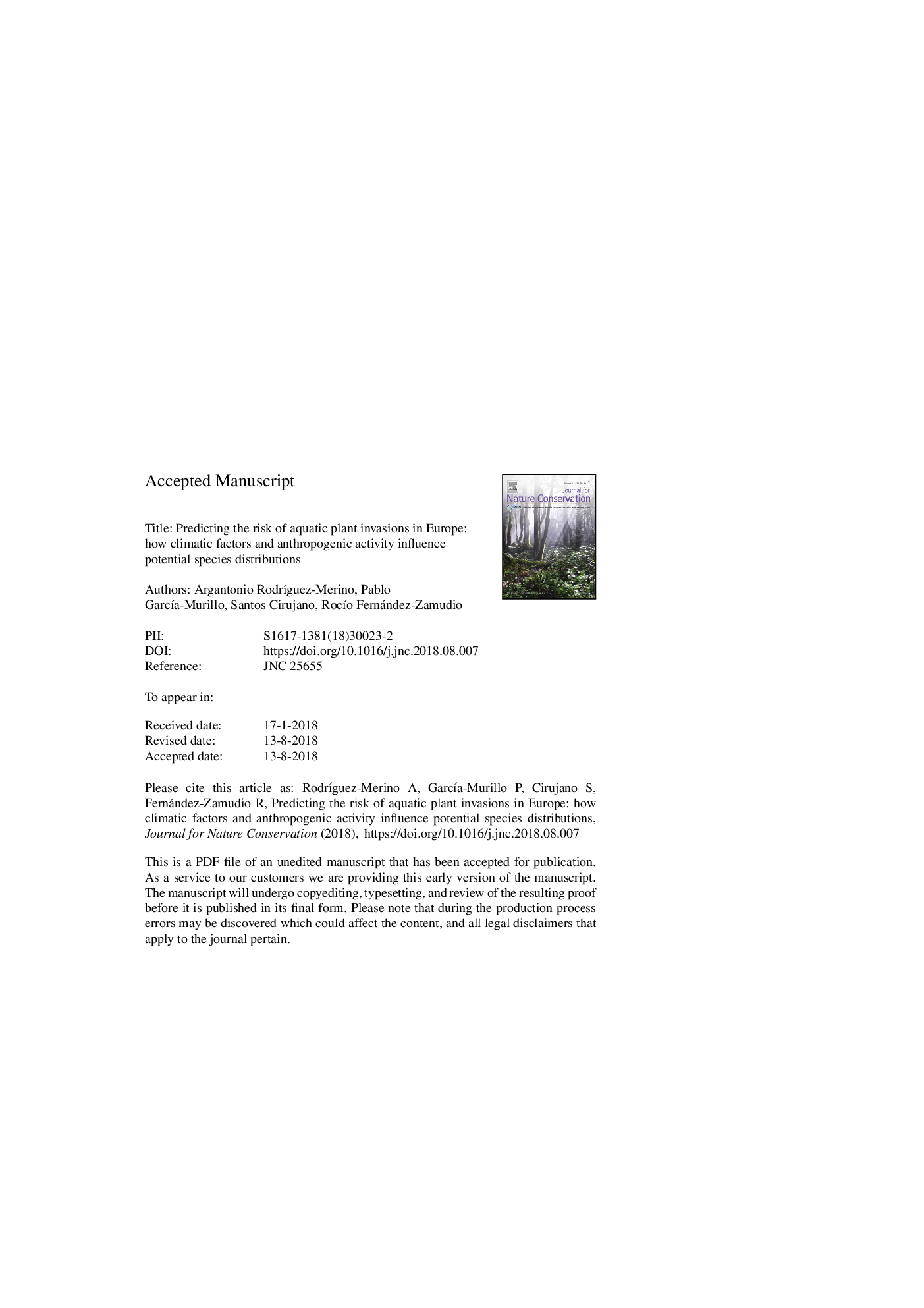| کد مقاله | کد نشریه | سال انتشار | مقاله انگلیسی | نسخه تمام متن |
|---|---|---|---|---|
| 8849224 | 1618523 | 2018 | 43 صفحه PDF | دانلود رایگان |
عنوان انگلیسی مقاله ISI
Predicting the risk of aquatic plant invasions in Europe: How climatic factors and anthropogenic activity influence potential species distributions
ترجمه فارسی عنوان
پیش بینی خطر ابتلا به تهاجم گیاهان آبزی در اروپا: چگونگی تاثیر عوامل محیطی و فعالیت انسان شناسی بر توزیع گونه های بالقوه
دانلود مقاله + سفارش ترجمه
دانلود مقاله ISI انگلیسی
رایگان برای ایرانیان
کلمات کلیدی
موضوعات مرتبط
مهندسی و علوم پایه
علوم زمین و سیارات
علوم زمین و سیاره ای (عمومی)
چکیده انگلیسی
Predicting where species invasions will occur is one of the greatest challenges in conservation. Freshwater ecosystems are very vulnerable to the introduction of non-native species for two reasons: (1) there are many routes of introduction by which non-natives can arrive in freshwater systems; and, (2) freshwater systems are heavily impacted by a wide variety of human activities. Non-native aquatic plants can have harmful effects if they change habitat conditions, alter ecosystem functioning, and/or become key primary producers in invaded ecosystems. In this study, we focused on the potential distribution of non-native aquatic plants in Europe. The main objectives were to (1) identify environmentally suitable areas into which focal species could potentially spread; (2) generate a combined risk map for all the focal species and for the ten most harmful species in Europe; and (3) identify the main physicochemical characteristics of the areas at greatest risk. The results revealed that the potential distributions of non-native species were best predicted by climatic factors, notably by temperature-related variables. Anthropogenic activity was also a major contributor to the distribution patterns of all the non-native species examined. Areas experiencing high levels of eutrophication, a phenomenon that is strongly associated with anthropogenic activity, were among those at greatest risk of invasions. The approach presented here was intended to be broadly applicable. For example, it could be used to look at other taxonomic groups, regions, and/or systems. The overarching aim is to provide an effective basis for developing and implementing management and control strategies that can mitigate the effects of current invasions and prevent future ones.
ناشر
Database: Elsevier - ScienceDirect (ساینس دایرکت)
Journal: Journal for Nature Conservation - Volume 45, September 2018, Pages 58-71
Journal: Journal for Nature Conservation - Volume 45, September 2018, Pages 58-71
نویسندگان
Argantonio RodrÃguez-Merino, Pablo GarcÃa-Murillo, Santos Cirujano, RocÃo Fernández-Zamudio,
